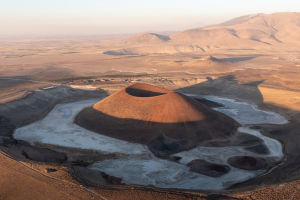Dreaming of a global sailing adventure?
Navigating the world's oceans is more achievable than ever, and you don't have to be an expert to embark on this extraordinary journey.
With the right preparation and guidance, you can set sail into the adventure of a lifetime.
How to Begin Your Journey
There are two main paths to consider:
1. Sail Your Own Boat
- Advantages: Total freedom to customize your route and itinerary.
- Challenges: Significant upfront investment, vessel preparation, and sailing expertise.
2. Join a Sailing Rally
Programs like the World ARC Rally offer structured, guided trips.
Benefits include:
- A ready-made community of sailors.
- Professional support for route planning and logistics.
- Opportunities to join for one leg or the entire voyage.
Choosing the Right Time
Timing is everything in a circumnavigation. Factors like weather, trade winds, and seasonal storms must be carefully considered.
Key Tips:
- Avoid hurricane seasons in the Atlantic (June to November).
- Favorable trade winds are typically in winter for crossing the Atlantic.
- Navigate the Southern Ocean in the summer months (December to February).
- Steer clear of monsoon seasons in the Indian Ocean (June to September and November to March).
Top Routes to Explore
1. Eastward Route
- Follows prevailing westerly winds in the Southern Hemisphere. - Highlights: Southern Ocean, Cape of Good Hope.
2. Westward Route
- Aligns with trade winds for a smoother experience.
- Typical stops: Panama Canal, Indian Ocean, Cape of Good Hope.
3. Classic Circumnavigation
- Europe to the Caribbean via the Canary Islands, through the Panama Canal, across the Pacific, and back to Europe.
4. World ARC Rally
- A structured route starting in the Caribbean, crossing the Pacific and Indian Oceans, and returning via the Atlantic.
Benefits of Joining the World ARC
- Shared Knowledge: Learn from experienced sailors.
- Logistical Support: Professional planning ensures safety and efficiency.
- Flexibility: Join for a single leg or the entire journey.
How Long Does It Take?
- Non-stop circumnavigation: ~100 days covering 15,000–25,000 nautical miles.
- Leisurely voyages with port stops: 1–3 years.
- Average sailing speed: 100–150 nautical miles per day.
Essential Preparation
To make your dream a reality:
- Learn the Basics: Enroll in sailing courses and practice extensively.
- Financial Planning: Budget for your journey, including equipment, fuel, and food.
- Equip Your Vessel: Ensure your boat is well-prepared for long journeys.
- Stay Updated: Monitor weather patterns and carry updated navigation tools.
Circumnavigating the globe is a life-changing experience. Whether you sail your own boat or join a rally, meticulous preparation and timing are key to a successful journey. So, pack your gear and set your sights on the horizon—your adventure awaits!


